The Scottish Yachting Archives
Yachting had become a well-established pursuit in Scotland by the mid-19th century. Its early evolution was primarily centred on the Clyde which provided ideal waters for both racing and cruising, but soon Scottish designed and built yachts ventured far afield. Specialist businesses emerged to support the demand for yachts.
The Fife’s of Fairlie were the first of Scotland’s enduring yacht building businesses, whilst G. L. Watson was the first in the world to establish a dedicated yacht design business. Both the Fifes and Watson followed a trajectory that went from local renown, to national celebrity, and eventually international acclaim. The vessels they designed and built became the elegant ambassadors of Scottish ingenuity and skill. Today the names of Fife and Watson are still relevant and are celebrated as the preeminent Scottish yacht designers.
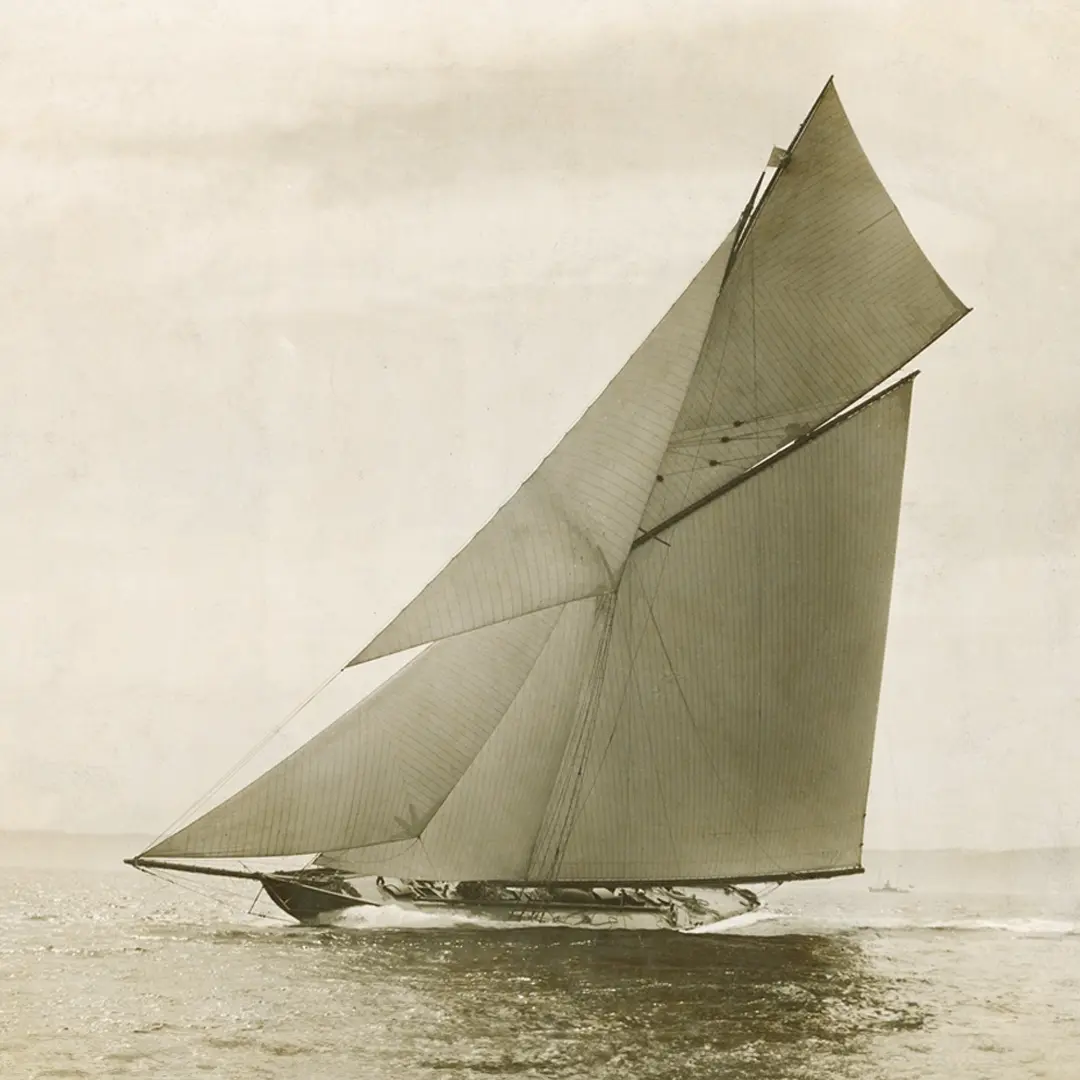
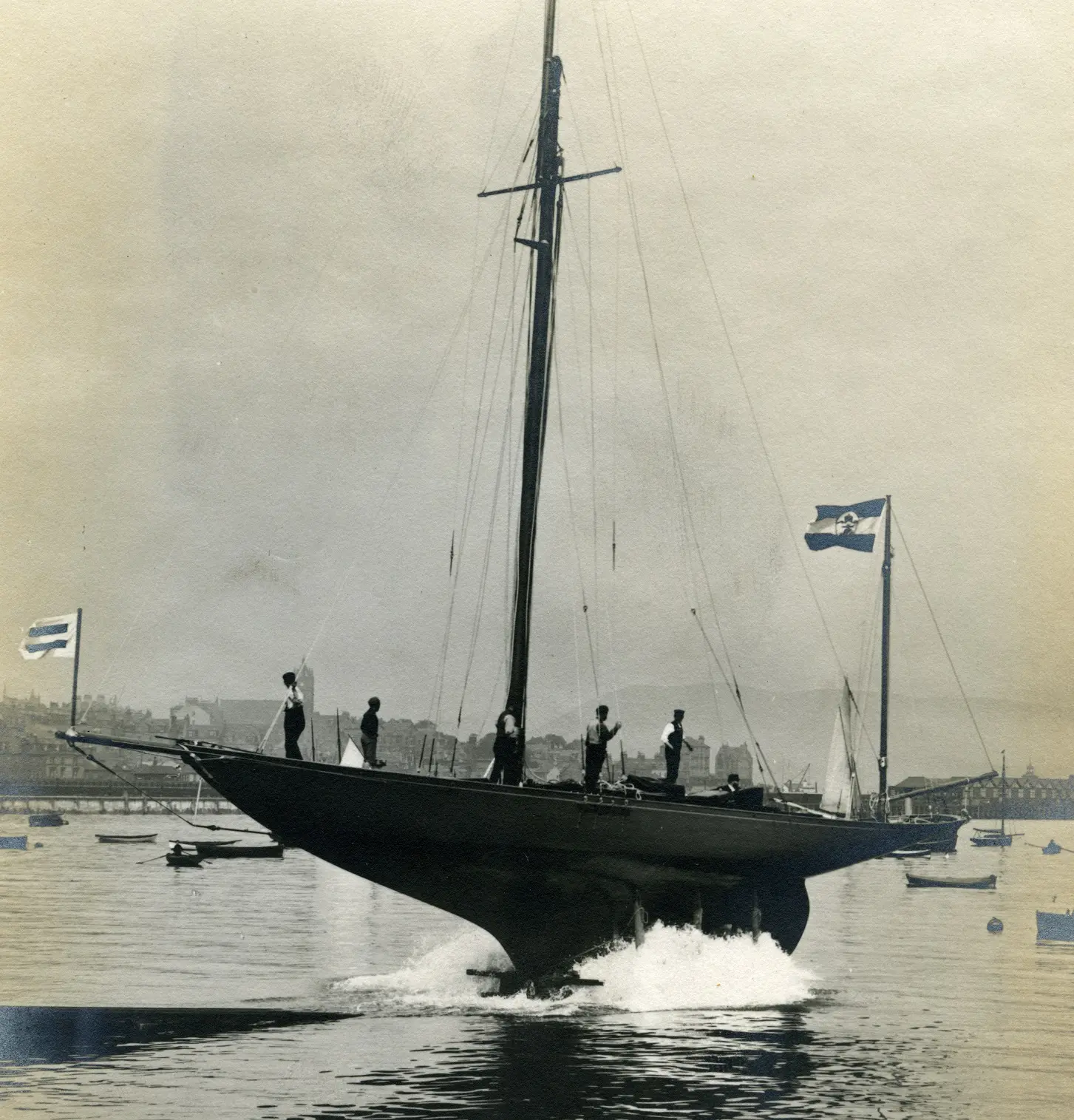
G. L. Watson’s legendary Britannia seen on the Clyde in 1894, her second season. She remains the most successful racing yacht ever.
The launch of Count Hugo Sholto Douglas’ yawl rigged 20 rater Ellen from James Adam’s yard at Gourock.
In 2020 Scottish Yachting Archives was formed to hold the archives of G. L. Watson & Co. Ltd and William Fife & Son (as well as their successors). There is significant synergy between the two collections; Watson and the Fifes were friends and design rivals. There are also areas where the businesses had significant differences. G.L. Watson & Co. were only ever designers and managers, the Fifes were designers and builders. Occasionally the Fifes built yachts to the designs of outsiders and this includes both G. L. Watson and Alfred Mylne; the third in the trio of most famous Scottish yacht designers. Invariably G. L. Watson-designed yachts were built by others, some abroad but overwhelmingly in Clyde yards and these range from small now largely forgotten 19th century yards such as those of Thomas Orr of Greenock, J. McAdam of Govan or J. McQuistan of Largs, to the internationally famous yards such as D & W Henderson of Partick, Denny’s of Dumbarton or John Brown & Co. of Clydebank where the largest racing yachts and great steam yachts were built.
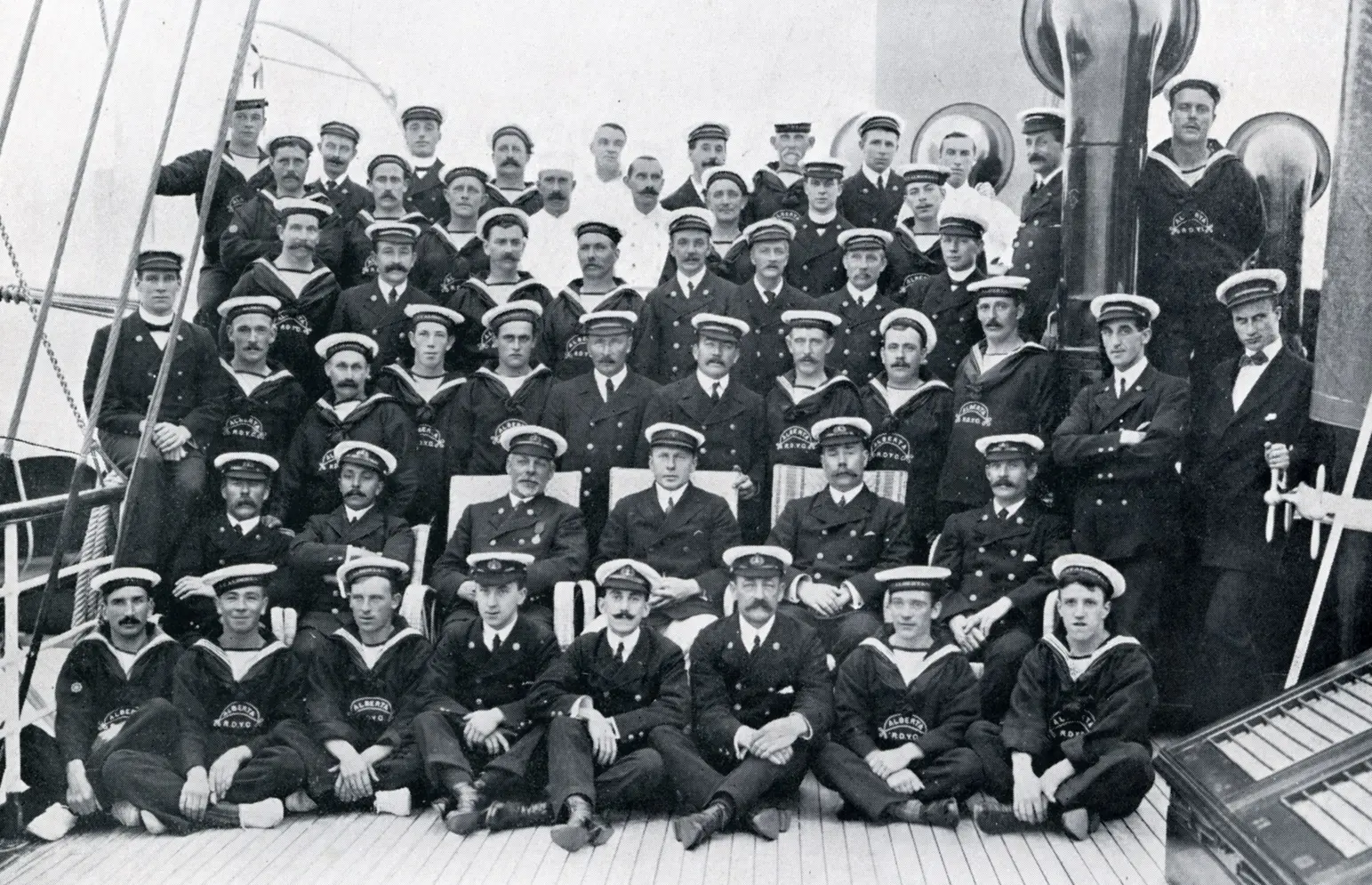
Crews in excess of 50 were not uncommon as here aboard Alberta ex Margarita when owned by the King of Belgium.
Yacht designing, construction and maintenance were significant sources of employment in Scotland. Yacht designing pushed the boundaries of technical knowledge with repercussions for mainstream shipbuilding. The achievements of Scottish designed yachts are myriad. Nearly all the crowed heads of Europe owned one at one time or another. In their wake, the holders of great wealth such as the Vanderbilts and Rothschilds followed. They played a key role competitive events, Britannia the British royal family’s racing yacht, designed by G. L. Watson and built at Partick, remains the most successful racing yacht of all time. Between them Watson and the last William Fife designed six America’s Cup Challengers and their yachts distinguished themselves at Olympic regattas, Cowes Week, in the British America’s Cup, the Seawanhaka Cup and the Fastnet Race. In the pre-World War II era, Scottish yacht design was internationally acclaimed.
The archives held are largely technical, often giving us all the information that the original builders of these yachts would have had. But they also contain correspondence: ranging from a routine letter from a supplier to a handwritten card from the Emperor of Germany considering the construction of a new steam yacht.
Alongside the technical documents, photographs form the most important part of the collection. Again, these reflect the full range of fashionable and prominent marine photographers practicing at ports visited by the yachts. But the collection is particularly strong on Scottish photographers including Maclure, McDonald & Co., T & R Annan, William Ralston, G. Innes, J. E. Polmont and G. L. A. Blair; all businesses that benefitted from the yachting trade.
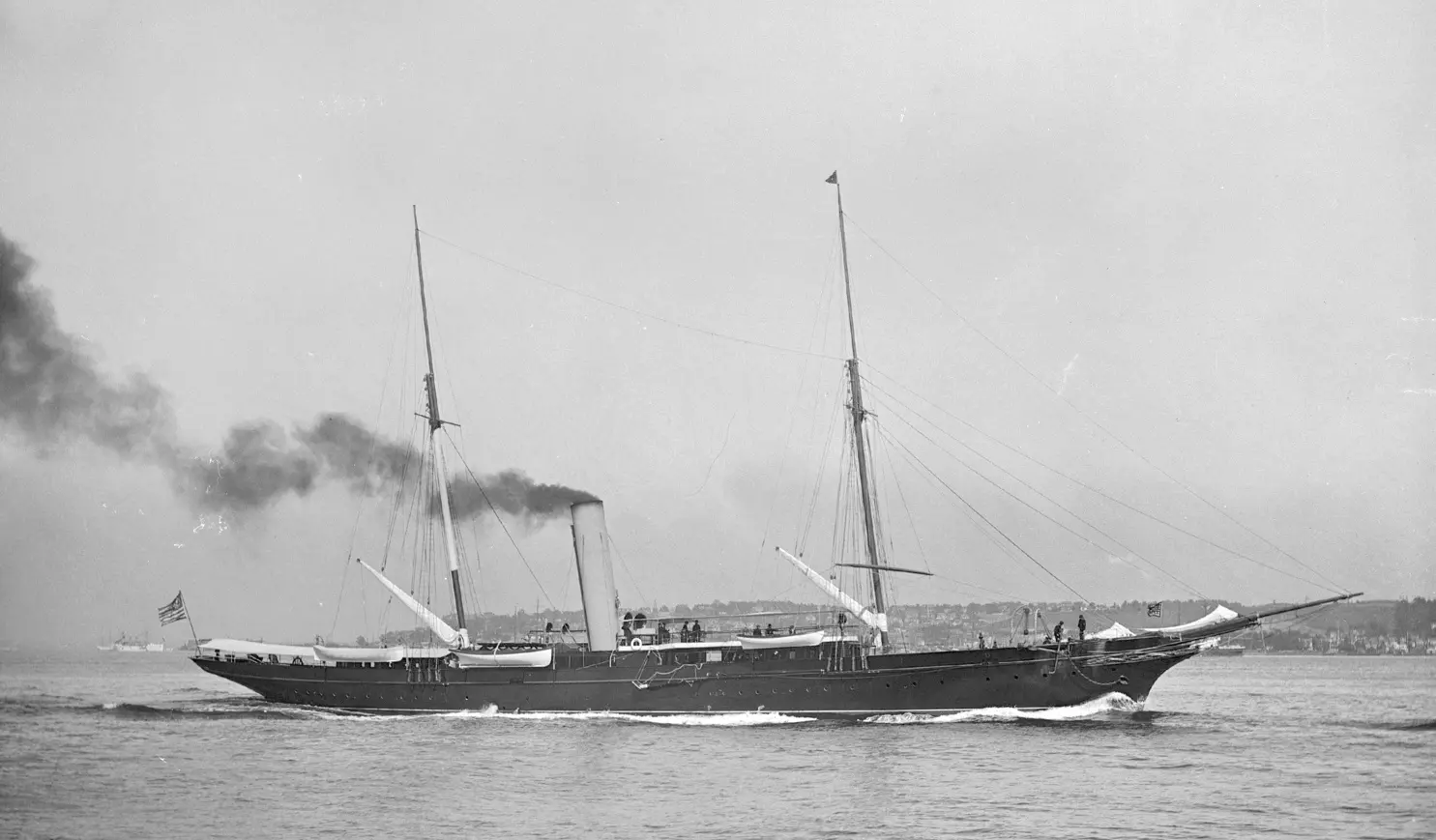
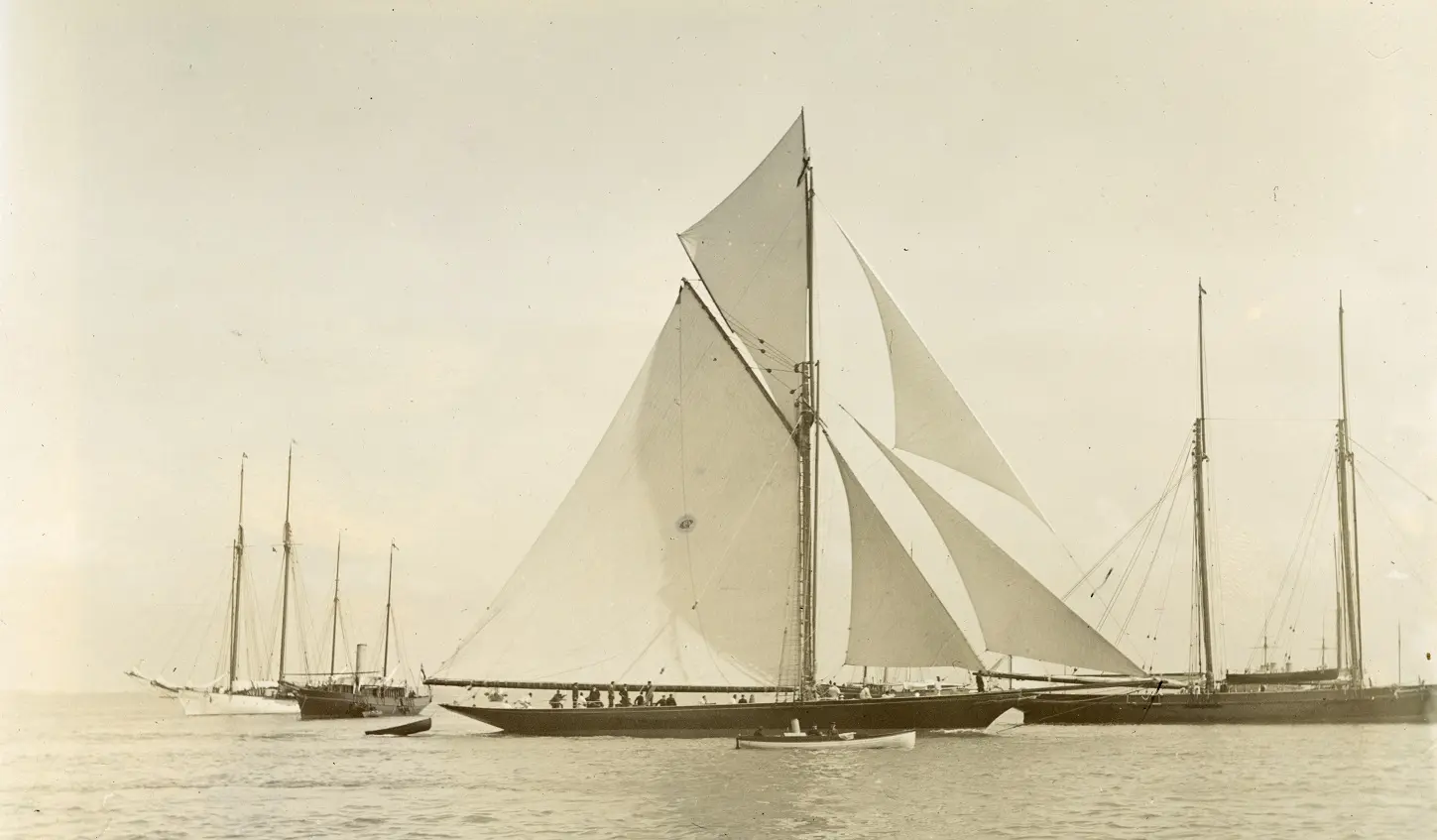
Built in 1891 for Glasgow merchant N. B. Stewart, May was acquired by banker E. D. Morgan and became the flagship of the New York Yacht Club.
G. L. Watson’s first America’s Cup challenger Thistle took an all Scottish challenge to New York in 1887l
Aside from the two key collections of Watson and Fife material, the archive also holds material from other Scottish yacht designers and firms involved in yacht design and construction. Outside of its focus on Scottish yacht design and construction it holds significant material on Camper & Nicholsons.
The primary objective of Scottish Yachting Archives is to provide a high quality repository for all the material held. This is achieved by detailed cataloguing, appropriate storage, condition assessment and conservation as required.
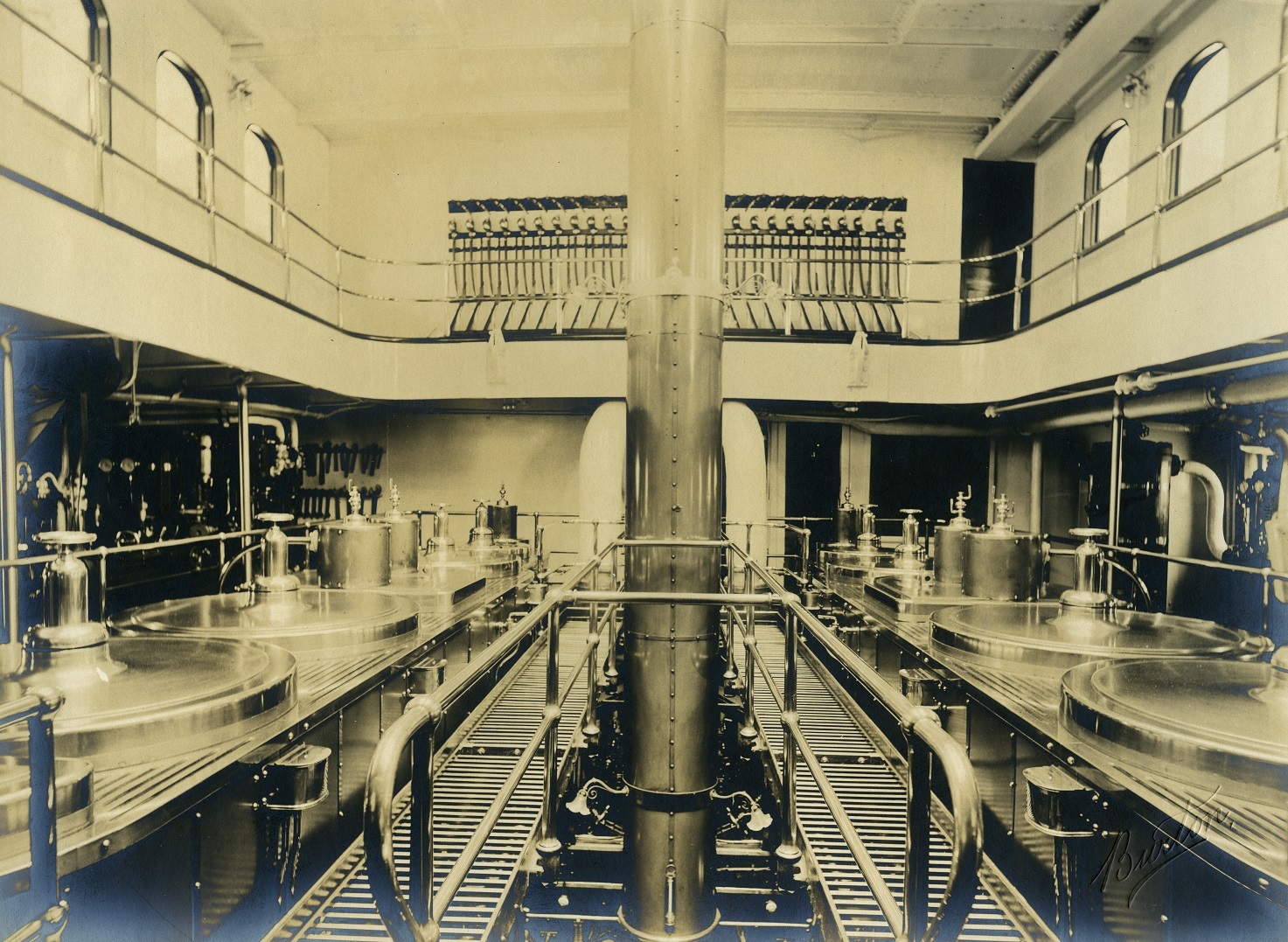
The 1900 steam yacht Lysistrata’s engine room shown in the immaculate condition that was typical for these yachts.
G. L. Watson & Co. continues to trade today and the archive facilitates that firm’s commercial work as field leaders in the restoration and maintenance of classic yachts. The organisation recognises the rarity of its collections and their wider historical value. Noting the importance of the cultural heritage represented by the archives, community and academic interest is welcomed and facilitated subject to commercial imperatives.
The archive has an active collecting policy whereby it looks to acquire material which will help it better reflect the evolution of yacht design, construction and use in Scotland. This includes material connected with persons who may have been designers, builders, crew or active in other associated roles.


